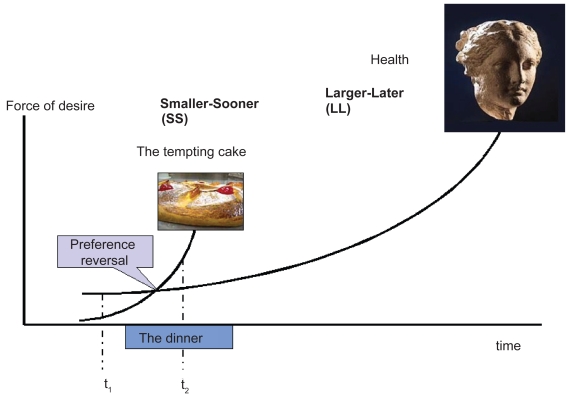Figure 1.
Preference reversal.
Because of the hyperbolic nature of the curves describing time discounting of a small and a large reward, the curves cross over (preference reversal). At time t1, the large reward seems more important than the small, immediate reward. At t2, taking the small, immediate, reward is rational. According to George Ainslie:
“a hyperbolic discounter who faces a choice between smaller-sooner (SS) and larger-later (LL) rewards will evaluate them roughly in proportion to their objective size – their values at zero delay – when both are distant, but value the SS reward disproportionately when it is close. Thus she will have an innate tendency to form temporary preferences for SS rewards, purely as a function of elapsing time”. (Ainslie 2005).

